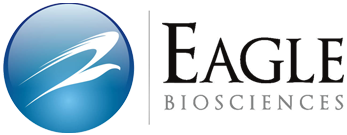
The H. pylori Qualitative ELISA Kit was utilized in recent study! Scientists explored if Helicobacter pylori infection is a risk factor for developing non-alcoholic fatty liver disease in children. Check out the details and access the full findings below.
Abstract
Helicobacter pylori infection has been investigated as a potential risk factor for non-alcoholic fatty liver disease (NAFLD). Some studies suggest a possible link between the two conditions. The purpose of this study is to study the relationship between H. pylori infection and NAFLD in pediatrics and its relation to NAFLD grades. A case–control study to identify predictors of NAFLD and a comparative cross-sectional approach to determine factors affecting NAFLD grades were adopted. One hundred NAFLD children (ultrasound-based) and a control group of 100 non-NAFLD children were recruited. Both groups were evaluated by detecting H. pylori stool antigen. Immunoglobulin G antibodies to Cag A (cytotoxin-associated gene A), Vac A (vacuolating cytotoxin A), Gro EL (chaperonin Gro EL), HCPC (Helicobacter cysteine-rich protein C), and Ure A (Urease subunit A) were assessed in the serum of those with positive stool antigen. H. pylori infection was significantly higher in NAFLD children compared to the control group (64% versus 25%, p-value < .001). (NAFLD children showed higher Cag A and Vac A positivity (34, 10%) versus (2%, 0%) in the control group, respectively, p-value < .001). The regression model showed that H. pylori positivity (OR (odds ratio) = 5.021, 95% CI (confidence interval): 1.105–22.815), homeostatic model assessment of insulin resistance (Homa IR) (OR = 18.840, 95% CI: 3.998–88.789), waist percentile (OR = 1.184, 95% CI: 1.044–1.344), and triglycerides (OR = 1.029, 95% CI: 1.012–1.047) were predictors for NAFLD. Cag A positivity (OR = 2.740, 95% CI: 1.013–7.411) was associated with higher NAFLD grade (grade 2 fatty liver).
Conclusions: H. pylori infection could increase the risk of NAFLD in children. Triglycerides, waist circumference, and Homa IR are significant independent predictors of NAFLD.
If you have any questions about this kit or any of our other offerings, contact us here.
